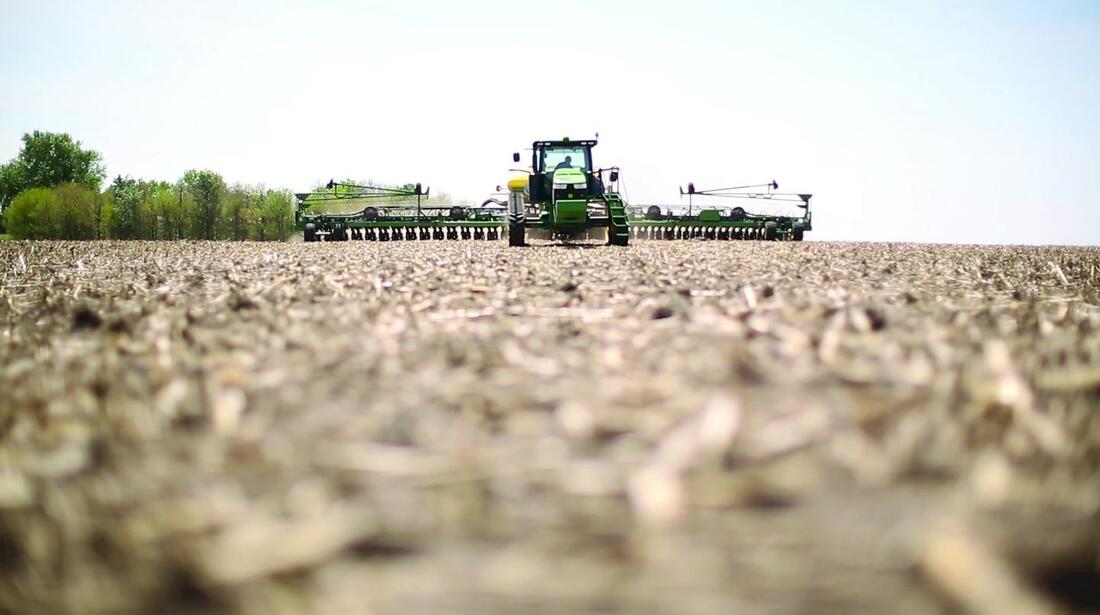2023 taught us that no season is the same and we must be flexible to adapt to what Mother Nature brings our way. The drought in the Corn Belt and South threw a wrench in growers’ in-season plans. Fortunately, Stine® genetics persisted and even thrived under pressure.

“Yields were still there,” says Mark Johnson, Stine corn technical agronomist. “I think it goes back to breeding. What we’re doing with our corn and soybean genetics and how we’ve progressed over the years … The genetics have improved and are better equipped to adapt to these extreme situations.”
Stine has spent decades researching and developing high-yielding genetics in various maturity ranges for different environments. While genetic selection is important in any given year, so are the cultural practices you pair with them.
“As we advance, we’re seeing different trends of what we can do to support genetics,” says Johnson. “We can utilize no-till, strip tilling … We can do things so that we’re not letting the moisture escape so readily when the drought sets in.”
Waiting for the right time to plant is critical to start the season off right, Johnson notes.
Early planting has become common practice for both corn and soybeans. Early planting can benefit the crop if the extended weather forecast is favorable. However, in some cases, like we saw in the South last year, it can lead to replant.
“In the South down in Louisiana and southern Arkansas, there was an early warm up in February,” says Johnson “Some people planted too quickly, even the third week in February. Then, a cold snap came back with a vengeance. Thousands of acres were affected, and replant came into play. No matter what the weather might be, you need to wait.”
Planting into cold soils can be especially challenging for corn and soybeans as the seed is vulnerable to imbibitional chilling, leading to uneven emergence. Corn is particularly at risk. If it sits in the ground longer than it should, the plant is forced to live off the energy and nutrients stored in the seed.
In an April 2023 article, Stine technical agronomist Tony Lenz noted corn imbibes 30% of its weight in water before it germinates. It can severely disrupt the germination process if it imbibes cold moisture within 24–48 hours after planting. It can also lead to issues with the developing embryo, including corkscrew effect of the mesocotyl, which can result in the death of the seedling.
Planting into cold soils can impact the early vegetative stages of the plant and weaken its root structure in the long haul. Also, planting into cold and wet soils can lead to sidewall compaction, limiting your crop’s ability to thrive during the growing season. When in doubt, it’s best to wait until soils are consistently 50+ degrees Fahrenheit for more than a few days and the extended weather forecast is clear of cold rains for 24–48 hours after your anticipated planting dates.
The growing season ahead
Knowing what 2023 brought to corn and soybean growers, Mark Johnson has a few tips for the upcoming planting and growing season.
- Know your fields.
What corn hybrids and soybean varieties have worked in the past? Which ones haven’t panned out? Know what genetics work best in each field. Also, understand the soil on each field. If you’re unsure what lies below, consider soil testing. And review what diseases and pests could be present and what cultural practices work for each field. Consider crop rotation where it makes sense. - Have a game plan.
Sit down, go through your options for each field and map out a plan. Study your soil sample results to determine your fertilizer needs, including your pH levels and how that impacts your inputs. Plan for all the variables that will give your soil the best chance to maximize yield. Have a game plan to help you control the things in front of you and be proactive versus reactive in-season. - Leverage your relationships with your seed reps.
Stine regional sales agronomists and independent sales reps are available year-round to discuss every part of the crop production process with you. They can help you with product selection, seed treatment options, inputs such as fertilizers and insecticides, weed control, and any other variable before planting begins and throughout the growing season.
To learn more about the year that was and what growers can do to get ahead in 2024, listen to Johnson’s episode of the Stine Seedcast wherever you get your podcasts. To speak to a Stine rep about your planting plan before the season kicks off, find your local rep here.
Related Articles
-

Stine® to offer Syngenta’s Victrato® soybean seed treatment in 2026
December 2025 in Agronomy
-

Use Stine’s XP® seed treatments to prevent early injury to your crops
December 2025 in Agronomy
-

Understanding Stine’s enhanced oil profile soybeans
December 2025 in Agronomy
-

Soil sampling sets the stage for spring
November 2025 in Agronomy



